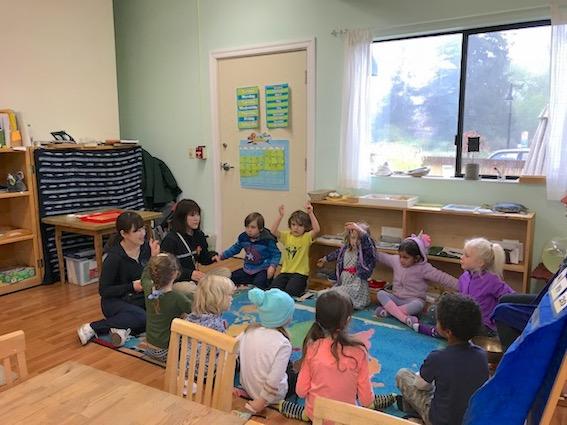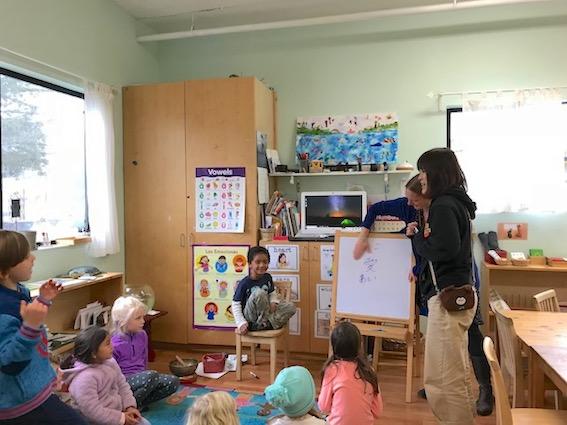2018年 報告(2017年度プログラム)
2018年 海外短期フィールドワーク 児童発達学科 報告11-1
2018.03.22
【2018年 海外短期フィールドワーク 児童発達学科 報告11-1】
■ Cabrillo College(アメリカ カリフォルニア州 サンタクルーズ) での海外短期フィールドワークです。
■日付は、日本時間での表記です(現地は、1日前になります)。

2018/03/22
今日と明日は、3つの保育所に別れての実習です(一部、私立小学校も含む)。タラレッド小学校は、モンテッソーリ教育メソッドを基本にした異年齢クラスの小さな学校で、4人を受けれてくれました。この写真の学生は1年生と2年生混合のクラスで、授業の初めに座禅を取り入れて瞑想した後に、それぞれ子どもたちに、今の気持ちと今日一日どんな気持ちでいたいかを出し合っていました。それを日本語で何というかも聞かれていましたね。例えば、Joy = 楽しい、courage = 勇気などです。
The students are having their internship at preschools (including a private elementary school) today and tomorrow. Tara Redwood Elementary School is a Montessori-based curriculum combined with other educational approaches in a mixed-ages, open classroom setting. In this photo, two students were in the class of first and second graders. In the circle time, they had Zazen meditation to get to a calm and peaceful mind. The teacher helped her students learn to express their feelings and thoughts. She even asked Japanese students to translate some of their answers such as joy (= tanoshii) and courage (= yuuki).

2018/03/22
こちらの学生たちは、トランジットKとKクラスに入っています。担任の先生はサークルタイムに、日本の話をたくさんしていました。例えば、挨拶の時にお辞儀をすることは日本の習慣ですよね、と学生たちに聞いていましたが、「いただきます」「ごちそうさま」の時も手を合わせての挨拶があることを具体例として言ってあげられるとよかったのですが、難しかったでしょうか。それとも、若者はもうお辞儀をしなくなっているのかな?
These students were at the TK and K class. The teacher talked about Japan and Japanese customs such as greetings with bowing. Bowing (without folded hands in front of your chest) is used in Japanese culture for many social circumstances. Most often, it is used as a sign of greeting and gratitude. However, to young people in Japan bowing may not be a typical custom any more!

2018/03/22
この地図の中のどこに日本がありますか?日本列島の列島(archipelago)という言葉は、最近子どもたちが学習したばかりであることを教えてくれました。日本は、この地図(アメリカとヨーロッパが中央に描かれている)の右の端にありましたが、消えそうなくらい小さいです!
Where is Japan in this map? They tried to find the Japanese archipelago which is the group of islands that forms the country of Japan. The teacher said that they just learned a word, archipelago. It is located in the far Eastern end of the map.

2018/03/22
さらに、日本語は書き言葉が3種類あることも紹介され、いくつかの単語を前に書いてほしいと頼まれました。先生からのリクエストは「平和」と「愛」でしたが、子どもたちに何を日本語で書いてほしいかを尋ねると、「chicken」というリクエストが出ました。にわとりを漢字で書けるか心配でしたが、「鶏」と立派に書けて良かったです!
The teacher also asked Japanese students to write Chinese characters such as Peace and Love and children wanted to know how to write chicken in Japanese. In fact, Chinese character for chicken (鶏) is much difficult than those of peace (平和) and love (愛), but Miku wrote it down beautifully.
